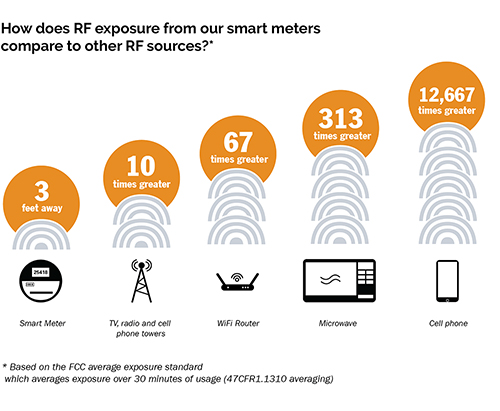Smart Meters and Radio Frequency
Smart Meters and Radio Frequency
Like many other electronics used in Canadian households every day, smart meters work using low-level radio signals called radio frequencies (RF). Some customers have questions about the health effects of exposure to radio frequency. Over the past 30 years more than 25,000 articles have been published on radio frequency. Knowledge in this area is now very extensive.
Here are the facts:
People are exposed to far lower levels of RF from smart meters than from many other electronic devices used in everyday life, such as Wifi routers, cell phones, and microwave ovens, to name a few.
Like our existing meters, all our meters meet Industry Canada standards and are subject to thorough testing, and we will continue to meet those standards.
In-depth review of the scientific literature by the World Health Organization (WHO) revealed that the small amount of RF produced by smart meters is not harmful to human health.
How does RF exposure from our smart meters compare to other RF sources?*

Health Canada Statement
Unlike cell phones, where the transmitter is held close to the head and much of the RF that is absorbed is localized to one specific area, RF from smart meters is typically sent at a much greater distance from the human body. This results in very low RF exposure levels across the entire body, much like exposure to AM or FM radio signals. Smart meters send data in short bursts, and when not sending data, the smart meter does not emit RF. Electricity meters used in Canada must follow Health Canada guidelines, and Health Canada has concluded that exposure to RF from smart meters does not pose a public health risk. Furthermore, indoor and outdoor measurements of RF from smart meters during transmission bursts were found to be far below the human exposure limits specified in Health Canada’s Safety Code 6. Based on this information, Health Canada has concluded that exposure to RF from smart meters does not pose a public health risk.
In July 2018, the NB Energy and Utilities Board accepted Canada’s safety standards.








